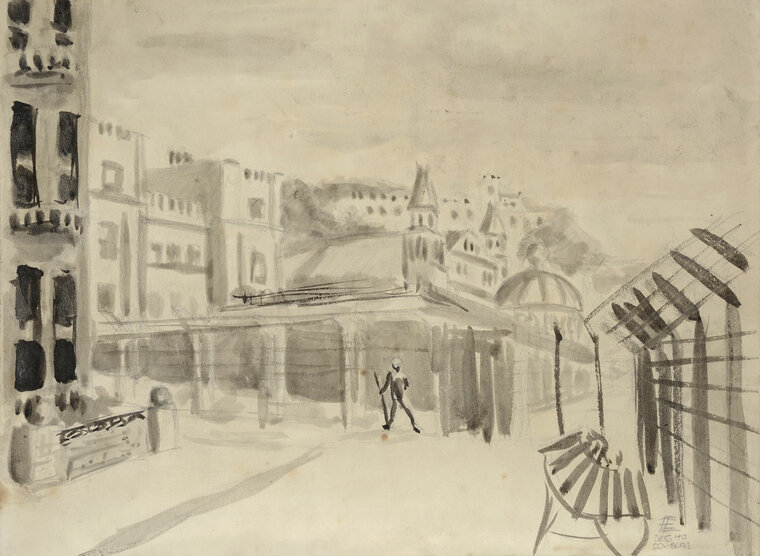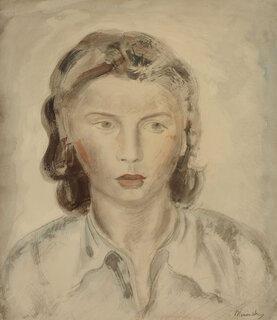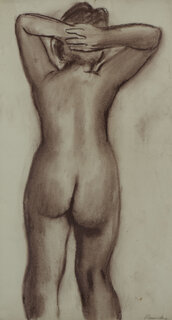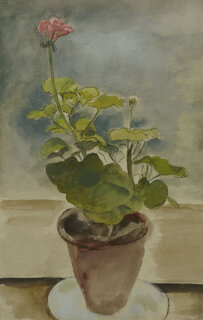
© Ernst Eisenmayer
After Dachau, Eisenmeyer recalled that captivity in British hands was 'at times, a bit of a lark', with trips to the cinema, football matches, a choir and a camp 'university' offering art classes. For artists, continuing professional practice was certainly possible. Admirably resourceful, they repurposed everyday materials. Despite Eisenmayer's affirmation: 'I don't go along with the presentation by some artists of the cliched barbed wire [.] We were bloody lucky on the Isle of Man, unlike the millions in German concentration camps'. The reverse of this drawing, accompanied by 29 internees' signatures, commemorating camp friendships, clearly depicts the wire being torn apart by a youth, beneath which appear the words 'Jungend Siegende Jungend' ('Youth Victorious Youth'). On this side is a topographical view taken within Central Camp (where he was first interned on IOM before “graduating” to Onchan and finally Mooragh (Ramsey). It is looking north along the Promenade towards Castle Mona. We are grateful to David Wertheim for providing this information.




